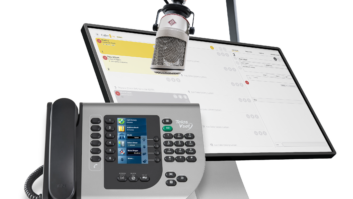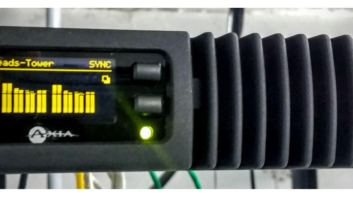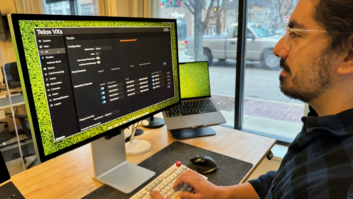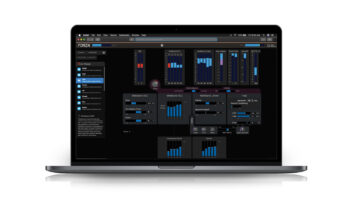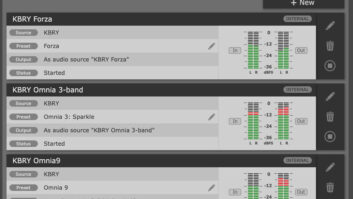
How they do radio in Ireland: Zenith Classic Rock jock Paul Dower toasts the Z/IP One on St. Patrick’s Day, 2013.WATERFORD, Ireland — Zenith Classic Rock is an Internet radio station of some notoriety: It’s one of the longest-running, having been online now for more than 10 years, and has therefore picked up a faithful following of listeners who tune in to hear a unique blend of classic rock standards interspersed with deep album cuts and oft-neglected tracks from the rock genre.
At the start of every year, this station gets to broadcast to the Southeast of Ireland in the traditional sense, on AM, FM and DAB, by means of a temporary license.
ON THE AIR
These licenses are relatively easy to come by in Ireland, but duration is limited to 30 days per year. Zenith uses these 30 days as 15 weekends of airtime.
Zenith makes use of automation most of the time, but during their annual forays into the radio frequency spectrum, they present mostly live programs. The studios and transmission facilities are rented from my company, Total Broadcast Consultants, so it was up to me this year to ensure that this station sounded as good as possible on-air.
The studio location is some 30 miles from the transmitter site, which is a mountaintop equipped with a 30-meter tower, antenna system and 1 kW transmitter.
In previous years, the station used a UHF composite link to get its audio from studio to transmitter, but that wasn’t possible this year due to a change in studio location. There is now no line of sight.
However, the transmitter site does have Internet access by means of a fixed-wireless Internet service company, and the studio location has Internet from a cable service provider. So this year, we decided to use this medium.
I installed a Telos Z/IP One codec at both ends. I knew this would be a good test of the codec’s capabilities because a continuous program feed over the Internet is quite a daunting prospect.
The studio is Axia-based, so interfacing the Z/IP One via Livewire was a piece of cake. At the other end, the AES/EBU digital output fed the FM and DAB processors.
The wireless Internet provider’s system has a pretty strict firewall arrangement and initially I found that the Z/IP Ones couldn’t manage a direct connection to each other, but the relay system Telos has built in — a connection via one of their Z/IP servers — worked fine while we struggled with port-forwards, NATs and various esoteric mechanisms to get the studio to “see” the transmitter site directly over the public Internet.
This method worked fine for the first weekend’s broadcasts, and by the second weekend, we had the codecs connecting one-to-one.
I love how you “introduce” the Z/IP Ones to each other. Just give them a unique name, and they appear in the directory shown on the unit’s display. Select the target unit, hit “Connect” and you’re off to the races.
I’m a stickler for audio quality. I hate hearing the artifacts of bitrate reduction, so would have preferred to run the link linear, i.e. with no compression, but the bandwidth required proved too taxing for the Internet upload capacity, so instead I opted for AAC-ELD coding, at 192 kbps.
Honestly? I couldn’t hear the difference on the received FM signal between linear and the AAC-fed transmission. In fact, I thought the AAC implementation by the Z/IP Ones sounded better than I had heard with other manufacturers’ codecs — a nice clear top end, no “swirling” and full bottom end.
Zenith’s FM (and Internet) audio processing is excellent, and always gets praise when on air. This year was no different — ordinary listeners actually did contact the station to say the quality was superb!
And in terms of reliability, I did hear a few fast dropouts, but looking at the logs in the Z/IP Ones, I could see that the upload capacity of the Internet link had simply bottomed out. I also saw that some very bad stuff had happened on quite a few occasions to the data throughput, but the connection hadn’t dropped. Telos’ “Agile Connection Technology” obviously works. The link was reliable for the 15-weekend run of live broadcasts.
For information, contact Telos Systems in Ohio at (216) 241-7225 or visit www.telos-systems.com.





